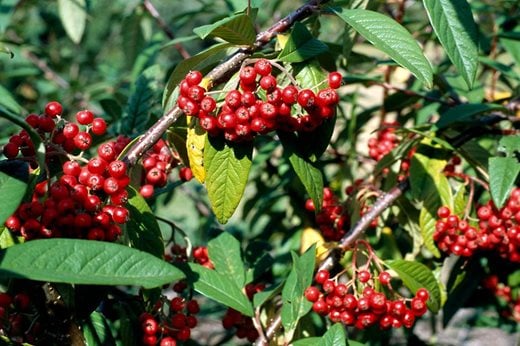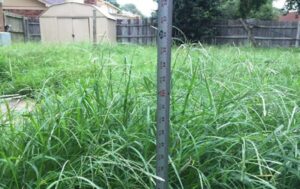
The combination of vibrant red berries against a backdrop of lush green foliage is a sight to behold in any garden. In this article, we’ll explore the enchanting world of plants adorned with red berries and green leaves, delving into their characteristics, popular examples, and cultivation tips to help you create a stunning landscape.
I. Introduction
A. Intriguing Botanical Combination The juxtaposition of red berries and green leaves creates a visually striking contrast that captivates gardeners and nature enthusiasts alike.
B. Commonly Found Varieties Numerous plant species exhibit this captivating color combination, each with its own unique characteristics and appeal.
C. Importance of Identifying Plants While many plants feature red berries and green foliage, it’s essential to accurately identify them, considering factors such as toxicity, growing conditions, and maintenance requirements.
II. Characteristics of Plants with Red Berries and Green Leaves
A. Foliage Attributes
1. Leaf Shapes and Textures Plants with red berries often boast a diverse range of leaf shapes and textures, from broad and glossy to finely serrated or variegated.
2. Color Variations and Patterns Green leaves come in various shades and hues, ranging from deep emerald to light chartreuse, while some may display intriguing patterns such as mottling or veining.
B. Berry Characteristics
1. Size and Shape The berries of these plants can vary significantly in size and shape, from small and round to elongated or clustered in ornamental formations.
2. Edibility and Toxicity While some red berries are edible and even prized for their flavor, others may be toxic if ingested, emphasizing the importance of proper identification before consumption.
C. Growth Habits
1. Plant Size and Form Plants with red berries and green leaves exhibit diverse growth habits, ranging from compact shrubs to sprawling vines or even small trees, offering versatility in landscaping designs.
2. Growing Conditions and Habitats These plants thrive in a variety of growing conditions, including full sun to partial shade, and are often found in woodland settings, hedgerows, or cultivated gardens.
III. Popular Examples of Plants with Red Berries and Green Leaves
A. Holly
1. Distinctive Foliage Holly plants are characterized by their glossy, serrated leaves, which provide year-round interest and serve as an ideal backdrop for their vibrant red berries.
2. Iconic Red Berries The bright red berries of holly plants are a symbol of the holiday season and provide valuable food for birds during the winter months.
B. Nandina (Nandina domestica)
1. Elegant Foliage Nandina plants feature delicate, lacy foliage that changes color throughout the year, transitioning from green in spring and summer to shades of red and purple in fall and winter.
2. Clusters of Bright Red Berries In late summer and fall, nandina plants produce clusters of bright red berries that add a pop of color to the landscape and attract birds and wildlife.
C. Skimmia (Skimmia japonica)
1. Glossy Green Leaves Skimmia plants boast glossy, leathery leaves that remain evergreen throughout the year, providing a lush backdrop for their clusters of vibrant red berries.
2. Clusters of Vibrant Red Berries In late summer and fall, skimmia plants produce dense clusters of bright red berries that persist into winter, adding visual interest to the garden during the colder months.
IV. Cultivation and Care Tips
A. Suitable Growing Conditions
1. Light Requirements Most plants with red berries and green leaves prefer partial to full shade, although some may tolerate full sun with adequate moisture and protection from intense heat.
2. Soil Preferences Provide well-draining soil enriched with organic matter to promote healthy root growth and ensure adequate moisture retention without waterlogging.
B. Watering and Fertilization
1. Adequate Moisture Levels Maintain consistent soil moisture levels by watering plants regularly, especially during dry periods, and mulching to conserve moisture and suppress weed growth.
2. Balanced Fertilizer Application Apply a balanced, slow-release fertilizer in spring to promote healthy growth and berry production, following label instructions for proper dosage and application frequency.
C. Pruning and Maintenance
1. Shaping and Trimming Prune plants as needed to maintain their desired size and shape, removing dead or damaged branches and thinning overcrowded growth to improve airflow and light penetration.
2. Pest and Disease Management Monitor plants regularly for signs of pests or diseases, such as aphids, scale insects, or powdery mildew, and take appropriate measures to control infestations and prevent spread.
V. Conclusion
A. Aesthetic and Ecological Value Plants with red berries and green leaves not only enhance the aesthetic appeal of gardens but also provide valuable habitat and food sources for birds and wildlife.
B. Enhancing Your Garden with Vibrant Foliage and Berries Consider incorporating these stunning plants into your landscape design to add color, texture, and seasonal interest throughout the year.
C. Encouraging Appreciation and Conservation By cultivating and caring for plants with red berries and green leaves, you can foster a deeper appreciation for the natural world and contribute to the conservation of biodiversity in your local ecosystem.







Some really grand work on behalf of the owner of this web site, dead great subject matter.